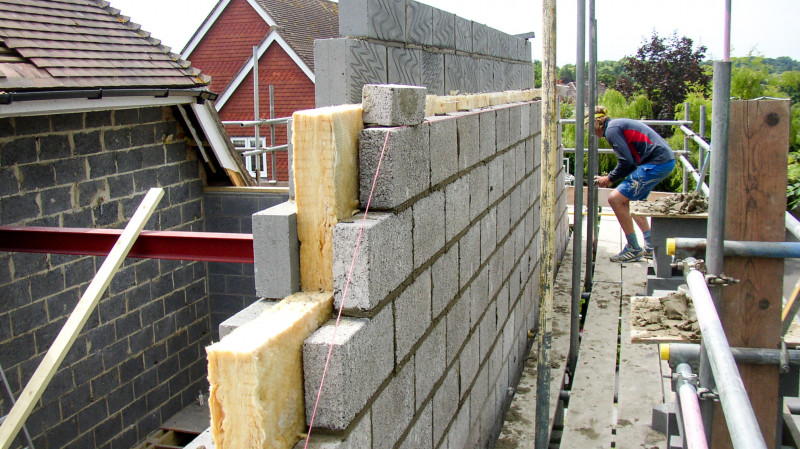You are here: How to brief your architect
You’re embarking on new extension and about to meet a few architects to discuss your ideas. But before you have the initial meetings, it’s worth taking time to work out exactly what it is you want to achieve. Your chosen architect can then assist you in preparing a final brief to design from. See below some questions to get you started.
“The ultimate success of your project depends on the quality of your brief, your ability to clearly describe for your architect the requirements and functions of your building …”
Royal Institution of British Architects (RIBA)

What do you want to achieve by your project?
What are your aims and aspirations - more space, more light, better connection with your garden? What would you like to see in your newly extended home that it currently lacks? How long do you plan to live there? Think about your lifestyle aspirations whether it’s lazy Sunday mornings, drinking coffee and enjoying the garden or cosy evenings watching television with the family. Explore those mental images – is there a log fire, a wood stove? Don’t worry too much about the cost at this early, exploring ideas, stage – just write down your wish list. This is the fun part.
What activities are intended for it?
What functions or activities will take place in the new proposed space? Do you want an open-plan layout so you can cook while spending time with your family or entertaining guests? Do you want a kitchen island? Where will the kids sit and eat? Do you want a separate TV snug or utility room for laundry? Do you work from home and need a quiet place separate from the living area? Have you considered a home cinema or gym or wine cellar? Do you have any preferences for orientation – a south facing kitchen for example?
What is your budget?
It’s always best to be transparent about how much you want to invest in your project, so that your architect can design accordingly. Be realistic about what you can afford from the start to avoid disappointment later. Remember the budget needs to include labour, materials, planning and professional fees (for example, architects, surveyors and engineers), fixtures and fittings. Allow at least 10% for contingencies. Architects are not trained as cost experts - they rely on quantity surveyors to guide them. But they can advise on feasibility of the initial concept. For example, you might want a two-storey extension but find out you can only afford a single-storey addition.
What do you need to prioritise?
Ideally, your dreams and budget will be aligned. However, you might not be able to afford everything on your wish list. What are your top priorities – the must haves as opposed to nice-to-have? Does your bathroom need to be wheelchair friendly, for example? Requirements like an extra bedroom so siblings of an opposite sex don’t need to share are easy to assess but think a bit deeper. How big does the room need to be and do you allow space for an en-suite bathroom? Research the price of big-ticket items to help you prioritise. How important is that designer kitchen?
What is your design style?
Think about your preferred design style. Are you looking for a design in keeping with your existing home or contrasting? Do you want a traditional, contemporary or high-tech design? Choose an architect who is sympathetic with your aims and aspirations. Don’t hire an architect whose signature style is minimalist white boxes if you want an elegant Georgian-style building, for example. Compile a scrapbook of images from magazines and the internet to show the designs or home features you like.
How important is it sustainable or ecological design?
Building an extension is an ideal opportunity to improve your property’s green credentials. Building regulations require certain energy efficiency measures when extending, such as insulating cavities and floors, low-energy lighting whenever possible and installing thermostatic valves on new radiators. But there are many ways to make your extension as eco-friendly as possible from building with reclaimed bricks to installing solar panels and living green roofs. Architects are trained in sustainable design and can advise on the best materials and solutions to achieve a more sustainable project.
What is your timeframe?
Do you have any specific time requirements? If you are in a hurry to have your extension built, now is the time to tell your architect. Remember the overall project may take up to a year or more to complete – and could take several months more if you have a difficult planning approval process. It is better to be flexible about the completion date rather than planning to be in by Christmas or your birthday, for example, as this can add unnecessary stress.
Who will make the decisions?
Who will make the decisions about the designs, costs and construction when the project is underway? Be aware of the different stages your project will go through from feasibility/concept, preliminary design, developed design and planning documentation. Each stage will require many decisions to be made and you will need time to look at the options and consider them carefully.
This might seem like a long list of factors to consider when writing a brief for your architect. But a thorough and articulate brief is a critical part of the design process. It communicates your desires, requirements, budget and priorities for your project – and helps achieve that dream home you’re looking for.
If you are looking to make some home improvements, you may find some of these services useful
Builders
Find local help with a building project
Building Regulations
Find details of local experts who can help with Building Regulations
Architectural Design Services
Find local Architectural Design experts
Structural Inspections
Find an expert to carry out a structural inspection
Building Surveys
I want a local surveyor to do a Building Survey for me
Choose which Architectural service you require
If you are not sure which service you require, check out the options available...


